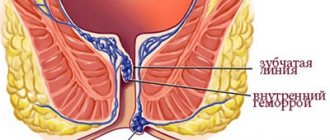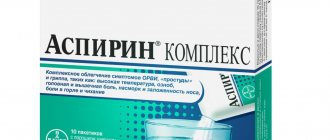Contraindications
The following situations are contraindications for the medicine Linex:
- the presence of hypersensitivity to the substances included in the product;
- the presence of individual intolerance to dairy products.
As we can see, there are no restrictions on the contraindications of the drug for women during breastfeeding. This means that Linex is approved for use during breastfeeding.
Indications for use
Despite the fact that Linex is considered a safe and useful drug, a nursing mother should consult a doctor before use. It is better not to self-medicate with Linex. The product is effective for the following problems:
- Dysbacteriosis. This is not an independent disease. Dysbacteriosis serves as a signal of any malfunctions in the functioning of the body, which may occur:
- during antibiotic therapy;
the presence of intestinal infections;
- operations and diseases of the gastrointestinal tract;
- poor nutrition.
- Allergy.
- Food poisoning, which is accompanied by nausea, vomiting, stool disorders, and increased body temperature.
- Flatulence, abdominal pain.
- Constipation or diarrhea.
- Infectious diseases of the gastrointestinal tract.
This phenomenon should not be ignored. Timely treatment helps prevent negative consequences and health problems.
Doctors recommend Linex not only for the treatment of dysbiosis, but also for its prevention.
For these ailments, it is important to find out their cause so as not to miss the development of dangerous diseases.
If, 7-10 days after starting to take Linex, the condition does not improve, there is an elevated temperature, severe diarrhea, and blood in the stool, this is a serious reason to consult a doctor, who will prescribe an additional examination.
"Linex" is also prescribed when taking antibiotic drugs that have a detrimental effect on the intestinal microflora. It contains bifidobacteria, lactobacilli and enterococci, which quickly restore the balance of nutrients in the body and reduce the impact of various pathogens.
When and what is Linex used for?
Probiotics are used to prevent and treat dysbiosis caused by the following factors:
- viral or bacterial infection of the digestive system (traveler's diarrhea, rotavirus infections and others);
- use of antibiotics and other antimicrobial drugs.
Using Linex for nursing mothers will help:
- maintain the optimal composition of the intestinal flora and normalize intestinal function;
- restore digestive functions after antibiotic therapy;
- will reduce the risk of disturbances in the activity of the digestive tract due to infectious lesions;
- normalizes the functioning of the immune system.
Linex is not a panacea for all diseases, but it will help restore physical activity and relieve the negative symptoms of dysbiosis (nausea, diarrhea or constipation, increased gas formation and abdominal pain). These manifestations can cause additional stress in a woman during breastfeeding, which will negatively affect not only her general condition, but also the health of the baby.
Can a nursing mother use Linex?
Linex has an antidiarrheal effect and restores disturbed intestinal microflora. It is classified as a 3rd generation probiotic, multicomponent, including a combination of several bacteria and additives. These are lactobacilli, enterococci and bifidobacteria. Excipients include lactose and potato starch.
Sold in capsules and powder form (for children). It has no contraindications or side effects, but individual intolerance cannot be ruled out. Linex is compatible with all medications, including antibiotics. But between taking an antibiotic and a probiotic, it is recommended to maintain a break of 3 hours.
Indications for taking Linex during pregnancy
Prevention or treatment of diarrhea of various etiologies, constipation, gas formation, flatulence, loss of appetite, indigestion. Colonization of the intestines with beneficial microflora after antibiotic treatment.
Contraindications to taking Linex during pregnancy
Intolerance to the components of the drug.
Linux release form
For adults, the drug is available in capsules packaged in a blister or dark glass bottle with a plastic cap.
Especially for ease of use by the youngest patients, Linex is produced in the form of a liquid in a bottle with a drip dispenser and in the form of a powder in portioned sachets.
Composition of Linex
- Active ingredients: Lactobacillus acidophilus, Bifidobacterium infantis, Enterococcus faecium. The total content of beneficial bacteria in each capsule exceeds 1 billion 200 million colony-forming units.
- Additional substances: lactose monohydrate, potato starch, dextrin, magnesium stearate.
- Shell: gelatin, E171.
Composition of Linex Forte
- Active substances: Lactobacillus acidophilus, Bifidobacterium animalis subsp. lactis. The total amount of beneficial bacteria in one capsule is at least 2 billion colony-forming units.
- Additional substances: anhydrous glucose, microcrystalline cellulose, potato starch, inulin, oligofructose, magnesium stearate.
- Shell: hydroxypropyl methylcellulose, E171, E172.
Linex during pregnancy: dosage
The daily dose for adults is 6 capsules, divided into 3 doses. During pregnancy, an increase or decrease in dosage is not required.
Linex forte during pregnancy: dosage
Linex Forte is used more economically. It is enough for an adult to take 1-3 capsules daily.
Linex and Linex Forte: what is the difference
- Linex contains lactobacilli, enterococci, bifidobacteria. The capsule in which the product is located is made on the basis of gelatin and is gastrosoluble.
- There are no enterococci in Linex Forte, but the content of lactobacilli and bifidobacteria is several times higher than in classic Linex. Also, the composition of Linex Forte is enriched with prebiotics. The shell of Linex Forte is made on the basis of hydroxypropyl methylcellulose and is enteric.
Consequently, Linex helps populate the intestines with a wider range of beneficial bacteria than Linex Forte.
But the latter contains prebiotics, the effect of taking it appears faster, and the active substances have a better chance of reaching the site of action alive.
Controversy regarding the effectiveness of Linux
There is no consensus among doctors regarding the advisability of taking Linex.
According to the instructions, these drugs are useful because:
- help fight pathogenic and opportunistic representatives of intestinal microflora by increasing intestinal acidity;
- lactobacilli are involved in the synthesis of vitamins C, B, K, the metabolism of bilins and cholic acids;
- increase the reactivity of the immune system.
According to research, Linex can indeed somewhat improve the course of some diarrhea, but is ineffective for chronic inflammatory or systemic diseases.
Skeptical medical professionals believe that probiotics are ineffective because:
- the lactobacilli contained in the capsule are digested in the stomach or die in the intestines under the influence of the patient’s own microflora;
- There are no large-scale randomized studies confirming the high effectiveness of drugs in this group.
Linex during pregnancy: how to take it correctly
- Capsules should be taken whole, without chewing, after meals. This will increase the chances that lactobacilli will reach the intestines unharmed. Take the capsules with at least 100 ml of warm liquid: water, milk.
- Do not take capsules with hot liquids or drinks containing alcohol.
- At least 3 hours should pass between taking an antibiotic or other drug and Linex.
Linex during early pregnancy
Linex will help the expectant mother in the first trimester of pregnancy, when the use of medications is significantly limited. It can help alleviate rotavirus infection or traveler's diarrhea.
Linex during pregnancy: 2nd trimester
In the second trimester, the product can be used to normalize microflora after treatment with antibiotics, to alleviate diarrhea caused by bacteria or viruses. Linex is also prescribed for increased gas formation, belching, and vomiting.
Linex during pregnancy: 3rd trimester
In the third trimester, the indications for use are the same as in the second.
Linex for constipation during pregnancy
More than half of pregnant women experience constipation. First, the reason for this is progesterone, which has a relaxing effect not only on the uterus, but also on the smooth muscles of the intestines, and also slows down the digestion process.
Also, the intestines of expectant mothers absorb liquid more abundantly, which makes the stool more dense. In the later stages, the enlarged pregnant uterus puts pressure on the intestines, disrupting peristalsis and making it difficult to pass feces.
According to the annotation for Linex, use during pregnancy is also possible for constipation. However, the drug may not help if the expectant mother’s defecation disorder is caused by physiological reasons.
Linex during pregnancy: reviews
Most of the reviews about Linux are positive. People who have used them note the effectiveness and good tolerability of these drugs. Among the negative effects, rare allergies are mentioned.
Main features of using the drug
Numerous studies have been conducted that have confirmed that Linex for newborns is a product used from the first days of a child’s life. Nursing mothers should carefully read the instructions before starting treatment.
Linex Forte is a medicinal drug that is classified as eubiotic. Lactobacilli in the human body are used to synthesize lactic acid. The drug also contains bifidobacteria. For an infant, the medicine helps distribute microorganisms throughout the microflora that are necessary for proper digestion.
Through regular use, normalization of metabolism and better absorption of vitamins is achieved. The level of local immunity in the intestines noticeably increases.
Main contraindications
The instructions for use contain information about those cases in which infants are not allowed to drink Linex. First of all, its use should be avoided if there is a suspicion that the child is intolerant to milk sugar.
Can Linex be used to treat children with lactose intolerance? The answer is negative. In this case, it is advisable to transfer the baby to a special adapted version of the formula, which does not contain protein.
The manufacturer completely replaces it with soy components.
Reviews about Linux
You can find a huge number of both positive and negative reviews on the Internet. Some pediatricians claim that there is no effect from the use of lacto- and bifidobacteria.
Scientists have not yet refuted the theory that almost all beneficial microorganisms do not die under the influence of hydrochloric acid, which is found in large quantities in the stomach.
Linex after enterosgel does not give any effect at all, so it is best to abandon this option immediately.
If patients suspect microflora disorders, they are given special mixtures. They are produced on the basis of fermented milk products, which are completely adapted to the functioning of their body. If it is necessary to switch to an artificial feeding option, then it must be selected by specialists in the field of infant nutrition.
Linex will return healthy sleep to the childVeronica, 24 years old. We were prescribed Linex in capsules after the child began to be very capricious and cry regularly.
The pediatrician said that the situation was improving against the background of colic and gas. The drug must be diluted before use. The process is uncomfortable, but after just a few days we noticed an improvement in our baby's sleep.
We also managed to forget about bloating and colic. Alena, 32 years old.
I had to give drops to my son according to the regimen that was prescribed by our attending physician. The treatment took a long time, but I was not able to notice any tangible results. Another disadvantage is the high cost. From such a drug you expect only an effective effect, but it only devastates the family budget.
Source: https://my5card.ru/ponos/mozhno-li-kormyashhej-mame-primenyat-lineks.html
Compound
Linex contains beneficial bacteria necessary for the normal functioning of the intestines and the digestive system as a whole:
- lactobacilli (Enterococcus faecium);
- bifidobacteria (Lactobacillus acidophilus);
- enterococci (Bifidobacterium infantis).
During lactation, Linex will help patients restore the disturbed balance of microflora , improve peristalsis, and increase the activity of the immune system. Beneficial microorganisms block the proliferation of pathogenic bacteria and also promote the absorption of iron, calcium compounds and vitamins. Thanks to the normal functioning of the intestines, the general condition of a woman during breastfeeding improves, physical activity and immunity increase.
How does it affect lactation and the baby during feeding?
The drug does not affect the hormonal system and does not interfere with the lactation process. The active substances of Linex have a beneficial and rapid effect on the mother’s body, creating additional antibodies that enter the baby’s vulnerable body through milk, strengthening its protective functions and protecting it from infection. As a result, the child is less likely to suffer from colds and viral diseases, and his appetite and sleep improve.
In addition, the beneficial components included in the drug help strengthen the intestinal walls, forming a protective barrier against harmful microorganisms, and also suppress the proliferation of pathogenic bacteria and destroy toxins. At the same time, the functioning of the digestive organs is normalized, the synthesis of many vitamins is activated, especially groups B, K and C.
The drug does not impair the quality of breast milk. When using Linex, there is no need to interrupt breastfeeding, so it is a suitable option for a nursing mother, which restores microflora and helps with diarrhea.
However, when taking Linex, in rare cases, individual negative phenomena are allowed; the woman should carefully monitor the reaction of her body, as well as monitor the well-being of the baby.
Dosage and method of use
Linex is used for therapy in patients of all age groups, including children from the first day of life, women during pregnancy and the elderly. When breastfeeding a mother, Linex can be prescribed according to an individual regimen, but most often the standard dosage of the drug for adults is used.
Linex in capsules:
- For infants and children under 2 years of age, take 1 capsule three times a day;
- children from 2 to 12 years old are prescribed 1 - 2 capsules of the product three times a day;
- Patients over 12 years of age should drink 1 to 2 capsules three times a day.
Linex Forte:
- for children from the first days of birth to 2 years, doctors prescribe 1 probiotic capsule once a day;
- children from 2 to 12 years old - 1 capsule 1 to 2 times a day;
- for adult patients and children over 12 years of age, take 1 capsule 1 to 3 times daily.
Features of use
During the examination, a woman who is breastfeeding should inform the doctor about the symptoms of the disease.
If the following manifestations are present, additional examination is carried out:
- at temperatures exceeding 38 degrees;
- if there is blood or mucus in the stool;
- with prolonged diarrhea;
- for pain in the abdominal area.
Linex for breastfeeding is prescribed as part of complex therapy, including a special balanced diet.
If a probiotic is used together with antibacterial agents during breastfeeding, the interval between doses of the drugs should be at least 3 hours.
The use of the medicine should continue for at least 7 days after antibiotic therapy. This period is needed to ensure that the balance of microflora in the intestines is completely restored.
If Linex is poorly tolerated or insufficiently effective in women during breastfeeding, it is replaced with an analogue, for example Bifidumbacterin.
Prolonged diarrhea or constipation, as well as any discomfort during Linex therapy, are reasons to seek advice from your doctor. Women during breastfeeding should be attentive to their feelings, since the health and activity of the baby depends on them.
Use of Linex during breastfeeding
After the birth of a child, the body's immune defense weakens. A woman is more often susceptible to infections, including intestinal disorders, which is dangerous not only for the mother, but during lactation and for the baby. Therefore, doctors often advise taking Linex while breastfeeding to reduce symptoms and fight pathogens.
General characteristics of the drug
Linex is an effective probiotic containing several strains of bacteria beneficial to the body. The task of the drug is to cleanse from toxic compounds, restore natural microflora, and suppress the vital activity of pathogenic microorganisms.
The product is available in the form of a powder enclosed in white capsules. One package contains 2 contour cells with 8 pieces. You can purchase 32 tablets at once in a dark glass jar.
Contains:
- bifidobacteria;
- lactobacilli;
- enterococci.
Due to the presence of several beneficial microorganisms, Linex has a wide spectrum of action and can reduce the impact of most pathogens that penetrate the gastrointestinal tract.
Additional components:
Active ingredients entering the gastrointestinal tract are not absorbed into the bloodstream. On the contrary, Linex forms a protective film on the surface of the mucous membranes, which prevents the absorption of toxins. Treatment with a probiotic helps normalize digestion, increase the production of ascorbic acid, as well as vitamins B and K, which significantly improve immunity.
The components of the drug are not distributed from the gastrointestinal tract to other organs, so they cannot pass into breast milk. In addition, Linex does not pose a danger to the baby and is often used in the treatment of newborns.
Indications for use
Linex for breastfeeding is recommended if a woman encounters the following problems when breastfeeding:
- Dysbacteriosis.
- Diarrhea and constipation accompanied by attacks of nausea.
- Allergic reaction to food.
- Increased gas formation.
- Pain in the epigastrium.
- Infections with fever and vomiting.
Use in complex therapy is allowed. But it is necessary to use medications at intervals of 1.5–2 hours.
Contraindications
It is forbidden to take Linex during lactation if a woman has an individual intolerance to certain components, in particular milk sugar.
Can a nursing woman take it?
Since the drug is not absorbed into the bloodstream, it is safe for both mother and baby. Does not affect breastfeeding and does not reduce milk production.
Compatibility with lactation
Linex does not have any negative effects during breastfeeding. On the contrary, the drug helps produce antibodies, which from the woman’s body penetrate into the milk and are absorbed by the baby. As a result, the child’s immune defense is strengthened.
Doctors advise taking a probiotic not only for therapy, but also for the prevention of dysbiosis.
Dosage
Linex for nursing mothers is prescribed in accordance with the instructions:
- When breastfeeding, it is recommended to take 2 tablets (capsules).
- The dose is repeated 3 times a day after meals.
- When swallowing the drug, you need to drink regular boiled water. It is better not to use mineral water, even with released gases, as the effectiveness of therapy will decrease.
Although Linex is considered safe and is sold in pharmacies without presenting a prescription, self-prescription, especially during breastfeeding, is unacceptable.
Possible consequences
If after a 2-week course your health does not improve, you should consult your doctor and change the drug. The doctor will prescribe medications approved for breastfeeding, taking into account contraindications.
Use during breastfeeding is also discontinued if there are side effects:
- Prolonged increase in temperature.
- The appearance of mucus and blood in the stool.
- Diarrhea, dehydration leading to weight loss.
Such phenomena are observed extremely rarely, but cannot be excluded.
Linex should not be consumed simultaneously with hot drinks. This will lead to the death of beneficial bacteria, and the therapy will not have a positive result.
Reviews
Comments from women who have already used the drug will help you decide whether or not to take Linex while breastfeeding:
Ksenia, 28 years old, Samara
After giving birth, my stomach often hurt. Everything was swelling, gases were difficult to pass. The doctor prescribed Linex and said that the medicine is safe and you can breastfeed the baby. I tried it and didn’t regret it. Literally the next day it became much easier.
Kristina, 23 years old, Bryansk
I myself drink Linex for prevention and give it to my child. My little son is already 2 years old; infections rarely catch on. The probiotic was recommended by the pediatrician during lactation. Since then we have had almost no problems.
Olga, 32 years old, Moscow
It took me a long time to recover after giving birth. I had severe dysbiosis and periodically felt sick. I tried drinking herbs for diarrhea, but they didn’t help. I consulted with a therapist and underwent examination.
It turned out that the intestinal microflora was severely disturbed. The doctor prescribed Linex. I was afraid to accept it because I was afraid for my son, but I took the risk. Very quickly the condition returned to normal, there are no more unpleasant symptoms.
And the treatment had no effect on my boy. Grows strong and healthy!
Summary
If a woman is breastfeeding, medications should be used with caution. Some of them pass into milk and can harm the baby. Linex is a safe medicine and does not have a negative effect on the baby. But it is advisable to use a probiotic as prescribed by a doctor to eliminate the possibility of developing side effects.
Practitioner. She graduated with honors from Vitebsk State Medical University in 2012 with a degree in general medicine. She was awarded a certificate of honor for her achievements in her work.
Source: //BezOtravleniy.ru/intoksikacija-mam-i-detej/linesks-pri-grudnom-vskarmlivanii.html










